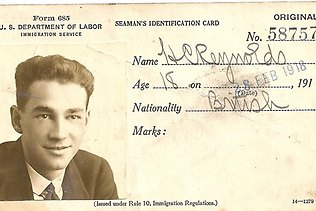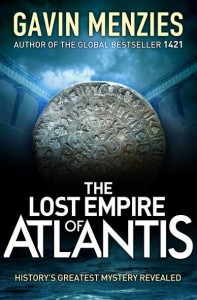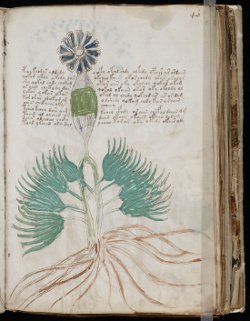[Here are links to chapters 1, 2, 3, 4, and 5. Enjoy!]
* * * * * * *
The crew were spending the rest of the day on those interminable fly-past shots of the Voynich Manuscript all modern documentary editors demand, their rostrum camera a microlight buzzing across a lightly-inked vellum landscape. But Marina Lyonne would be interviewing Mrs Kurtz tomorrow morning, which was when the real fun would begin.
Graydon shifted uncomfortably in his chair, looking sideways at Emm. “So… dare I ask why Mrs Kurtz is so bothered?”, he asked.
“It’s more than just her”, Emm explained, “it’s all the curators. On the one hand, they completely grasp that while the Voynich is ‘Beinecke MS 408’, they’ll never truly be free of the alien artefact, Knights Templar & Rennes-le-Chateau nutjobs.”
“Yeah”, he said, “they do go with the territory, I guess.”
“OK: but on the other hand it’s the hoax theorist academics who annoy them much more. To the curators, whatever the Voynich turns out to be, it’s still a genuinely old historical object: so those hoaxologists ought to know better than to treat it as some kind of postmodernist joke. Which is why the Beinecke tried hard to shut its metal and glass front doors to the French film makers.”
“So, they then – let me guess – brought on board the impeccably-connected Marina…”
“…who managed to pull some stratospherically high-up strings within Yale, right. Et puis“, Emm continued, gesturing expansively in the general direction of the film crew downstairs, “voici tout le monde. Still, none of that means the curators appreciate being powerplayed by her… or, indeed, that they will necessarily play boules.”
“So”, mused Graydon scratching his head, “my job now is to give Mrs Kurtz plenty of powerful petards to place under the whole hoax argument. I’m happy to do my best: I just wish I knew what would give the biggest bang.”
He stood up slowly, pausing as the scale of the challenge hove slowly into view. How on earth could he prove that it wasn’t a hoax? Given the pervasive fog of uncertainty that surrounds nearly aspect of the Voynich, how can anyone prove anything about it at all?
“Perhaps we should start with the dating evidence?”, suggested Emm: she took notes as Graydon patiently went through the early 15th century radiocarbon dating, the mid-15th century parallel hatching, the late-15th century quire numbers, the 14th century hunting crossbow, and the mid 14th to early 15th century Savoy-like marginalia handwriting. They all told much the same story: the Voynich was an object rooted in 14th and 15th century ideas, but written on early 15th century vellum.
Emm shook her head. “Marina’s bound to point to the disparities between the dates. Surely a 16th century hoaxer making something mysteriously old-looking would just copy lots of plausible bits onto old vellum?”
“It’s not really like that”, said Graydon. “None of these dates are exact, not even the radiocarbon dating. Yet they come from such different directions – radiocarbon, Art History, palaeography, history of science. A hoaxer would need a very much more multimedia notion of what it means to be old than was in play during the 16th century. Piece all those fragments together, and an overall story does emerge: it’s just that it’s not a 16th century story. Hence we can basically rule out John Dee and Edward Kelly as authors.”
“Oooh, your ex-wife definitely won’t like that“, smiled Emm. “But I don’t think it’s going to be enough to sink her ship. What about the cryptography – can you prove it’s a cipher?”
Graydon’s face dropped. “Really, that’s what’s been bothering me for the last couple of years or so – it’s why my PhD has taken so long. Pass those new scans, let’s see what Mrs Kurtz has got for me…”
The first one was something he’d asked for five years ago: multispectral scans of the “michiton oladabas” marginalia, highlighting the different inks used. Mapping iron, carbon and phosphorus to red, green and blue, the page came alive with layered detail, laying out what was clearly… a tangled, gritty mess.
“Oh no“, he groaned, “we don’t have anything like the weeks it would take to sort this out. But at least the ‘nichil obstat‘ part is reasonably clear now.”
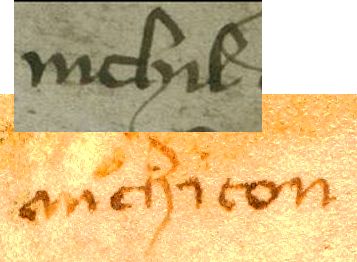
Emm shrugged blankly. “Which means…?”
“…’that it contains nothing contrary to faith or morals’. Essentially, it would seem that a 15th century church censor – possibly a bishop – has examined the manuscript and decided that its contents weren’t anti the Church. Nice to know, but not hugely informative.”
On they went to the next scan, and to the next, and the next, only to find that they all told the same tangled ur-story. Though there were plenty of subtly-sedimented ink layers in all the trickiest sections, there was nothing to be found that could obviously be used to disprove hoax theories… really, nothing at all. It was evening now, almost time for the Beinecke to shut for the day: Emm idly looked across to Mrs Kurtz’s cameo-lapelled grey coat hung up in the corner, and wondered where she was.
“Let’s try that first scan again”, Graydon sighed wearily. The pair of them looked again at the back page’s spectrally-enhanced marginalia, their faces pressed close to each other, both now squinting at the mysterious top line, tracing out the ductus, weft and weave of the letters with their fingers.
Graydon could feel the skin on Emm’s cheek buzzing hot with their intensely shared concentration: he was sharply reminded of the intensity of his marriage to Marina. For all the sexual bravado and defensive sparkiness of Emm’s verbal fencing, working with her in this way was provoking feelings in Graydon that nobody since Marina had managed. The timing was just plain wrong, and he hated to admit it, but right now his mind was turned on.
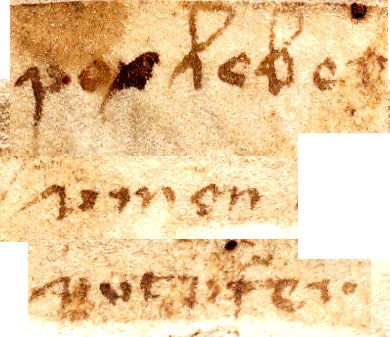
“It all makes sense apart from that last word”, Emm was saying, several thousand miles away from his runaway train of thought. “Por le bon Simon Sint… what?” She grabbed his hand and started carefully tracing out the super-enlarged letters with his index finger, as if he was the quill, her quill. However, her attempt at reconstructive history was having a dramatically different effect on Graydon from the one intended. It now wasn’t just his mind that was turned on.
For a minute that seemed to stretch out into an hour or a day, his gaze tennis-matched back and forth between the word she was tracing out imperfectly with his finger and her implausibly attractive face. Even though time was rapidly running out, he felt there was something he really had to tell her. “Emm”, he began, dredging the words out, “I really think we should…”
And then the door burst open: it was the security guard Davis, with a wrecked, slapped look to his face. “You better come quick. Mrs Kurtz is in trouble. Miss Lyonne gave her the kiss of life: an ambulance is on its way.”
They ran, taking ten steps at a time down the stairs to the reading room area. And there she was, lying on the floor by the desk, glasses askew but still on the chain round her neck, her skin white-grey as high winter cloud. Marina, sitting on the floor next to the librarian and holding her limp hand, looked wearily up at Emm and Graydon. “Heart attack”, she mouthed at them.
For a few moments, they all stuck in position in an awkward tableau, unsure what to say or do: then Davis reappeared with the paramedics in tow, and the whole resuscitatory logic took over.
Before long, Gray, Emm, and Marina found themselves outside the Beinecke in the cool evening air, an odd silence having fallen over them all. The Voynich didn’t seem important any more.
“So, this your new girlfriend?”, Marina sniped artlessly at Graydon.
“Why, yes she is”, interjected Emm, and before Gray could say a word had dragged him into an intensely full-on kiss. “Still, no time to rake over old ground, lots of new furrows to plough, we’ll see you in the morning, Miss Lyonne.” She swiftly yanked Graydon away from Marina’s burning red gape and off into the night.
As they marched away from the library, Graydon whispered to her “Err… am I going to regret asking you what that was all about?”
Emm paused: “It originally was a spur of the moment thing, but the more I think about it, the more support you’re going to need. After all, tomorrow will probably be the hardest day of your life.”
“Errr… sorry?” Graydon stammered.
Emm sighed. “For a bright bloke, you’re not very fast, are you? With poor Mrs Kurtz in hospital…”
But their conversation was interrupted in stereo by the same text message arriving at both their mobile phones:
Dear lovebirds (smile, you’re on CCTV), the Provost needs to see you ASAP. Perhaps you’ll join him for dinner at the Skull & Bones club at 8pm? A.Friend.
